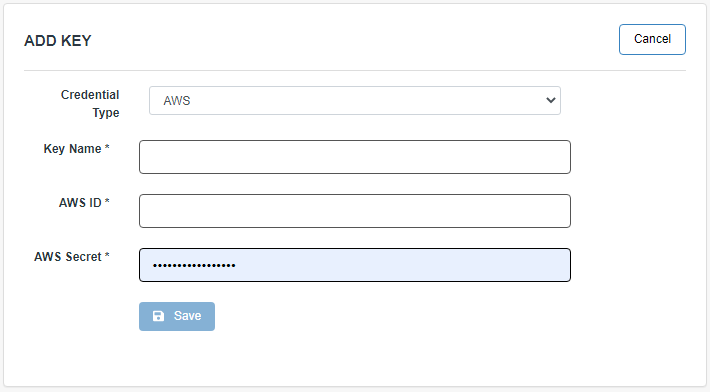Switchboard Credential Management
The primary function of Switchboard is to move data from a variety sources such as Google Analytics or e-commerce platforms like Pepperjam into a data warehouse. Doing so requires that Switchboard have credentials to all the 3rd party systems to which it connects.
The Key Editor
The Key Editor of the application provides for the management of user credentials into those source systems in a secure manner similar to LastPass or 1Password.
To access to the Key Editor click on the lefthand sidebar under the switchboard logo select the Keys Tab which displays the word “Keys” next to an icon that resembles a house key.
There are a variety of different Keys and the Keys are listed by the name of source they are accessing (i.e. Amazon, Adobe, Google).
The Key Editor will allow you to add new Keys, edit the values of existing Keys (such as if a password for an account changes or an access token expires), or remove a key, such as one you are no longer using using
Clicking delete will prompt you to confirm if you want to delete the key.
Properties of Keys
Selecting to Add or Edit a Key will cause the Keys Window to be displayed, allowing you to set the values associated with a Key for a given 3rd party system.

All Keys have a freeform label for called a Key Name which you will use to identify the credentials in the user interface as well as within recipes. The Key Name must be longer than 100 characters. Caution is advised when using using quotation marks as the Key Name must be a valid string value within our scripting language (similar to Python in syntax).
You may have multiple keys for the same system and you may even use the exact same credentials. Only the Key Name must be unique.
The additional properties of a Key depend upon the credentials required by the 3rd party system Switchboard is accessing. The properties could be a username/password combination similar to your login for a computer representing an account under which Switchboard is operating, or it could be an authentication token for a web service.
The values of properties that must be kept secret are not displayed, but instead have their characters replaced with asterisk characters to prevent unauthorized viewers from seeing them. This way you can edit the values of keys in a public setting and not be in danger of someone passing by seeing an exposed password.
Note that the Key Editor itself doesn’t check the validity of the credentials. That check happens when you are editing a recipe for a given connector and you are testing your connectivity as you set up a pipeline. It is in the context of a recipe that the specific Key defined for system will be designated using the Key Name.
Click Save to add or update the Key.
For an example of how to create a Recipe with a given see the Draft a Recipe section of the Quickstart guide.